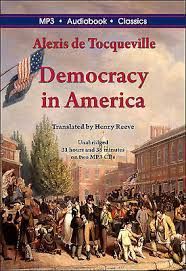Peter Drucker: Drucker’s Wisdom Thriving in an Age of Disruption
PUBLISHED:
Today, we find ourselves at the intersection of multiple technological revolutions. Artificial intelligence, robotics, blockchain, biotechnology, and quantum computing are just a few technological disruptive forces reshaping industries, economies, and societies. As we grapple with the profound implications of these technologies, it is worth turning to the wisdom of management thinker, Peter Drucker, to gain knowledge and self-knowledge. While Drucker passed away in 2005, his insights on navigating change and preparing for the future remain as relevant as ever.
Drucker was a keen observer of societal trends and their implications for leading, managing, and organizing. Rather than making specific predictions, he studied emerging patterns to gain insights about the challenges and opportunities ahead. Central to his thinking was that change is not an episodic event to be weathered but a constant reality to be embraced (Drucker, 1999). Let us explore some of Drucker's fundamental ideas about technology and societal transformation and what they mean for us now.
Technology as an Integral Process
In his 1969 book "The Age of Discontinuity," Drucker (1969) argued that technology should not be viewed as a foreign, disruptive tool, but as an integral process that has always been part of human existence. He noted that while technological change can be highly disruptive in the short term, it is a regular and ongoing part of societal evolution. This perspective is worth considering as we confront the dizzying pace of technological change today. Drucker's vision of technology as deeply intertwined with everyday life seems more apt than ever as artificial intelligence, as well as virtual and augmented reality, become embedded in everything from our smartphones to our financial markets. The lines between the digital and physical worlds have been blurred.
Navigating the Knowledge Society
Alongside his insights on technology, Drucker was among the first to identify the shift from an industrial economy based on manual labor to a "knowledge society" based on intellectual capital and the service sector. In his 1993 book Post-Capitalist Society, he argued that knowledge was becoming a critical resource and that "knowledge workers" would be the dominant group in the workforce (Drucker, 1993).
This shift has profound implications for educating, training, and managing people in an age of accelerating technological change. With many traditional jobs being automated or augmented by AI, Drucker’s counsel to pursue continuous learning and adaptability will be essential for individuals and organizations (Drucker, 1999). He also predicted a move away from hierarchical command-and-control structures towards flatter, more collaborative networks that leverage expertise across boundaries (Drucker, 2002).
This transformation is unfolding today, with the rise of agile methodologies, design thinking, and interdisciplinary teams combining diverse skill sets to solve complex problems. At the same time, as Drucker noted, the knowledge society also brings new challenges around issues like intellectual property rights, data privacy, considerations for ethical interactions surrounding new technologies, and the distribution of economic gains (Drucker, 1999). Addressing these issues will require technological innovation and social and political adaptation.
Leading in Times of Change
For Drucker, the key to thriving in a world of rapid technological and societal change was not clinging to yesterday's strategies but constantly questioning assumptions and adapting to new realities. As he wrote in his 1985 book Innovation and Entrepreneurship, "The greatest danger in times of turbulence is not the turbulence itself, but to act with yesterday's logic" (Drucker, 1985, p. 25).
This advice feels particularly apt as we navigate the uncharted territory of a post-COVID world, grappling with the long-term impacts of the pandemic alongside the ongoing march of technological disruption. In such times, Drucker would counsel us to embrace change as an opportunity for innovation, experiment with new ways of working and organizing and cultivate a lifelong learning mindset.
At the same time, he would likely caution against getting caught up in the hype around any particular technology or trend. For Drucker, the key was always to stay focused on the fundamentals - understanding customer needs, developing people, and building sustainable organizations that create societal value (Drucker, 1999). By grounding ourselves in these timeless principles while remaining open to new possibilities, we can chart a course through even the most turbulent of times.
Conclusion
As we navigate the technological and societal transformations of the 21st century, Peter Drucker's insights offer a beacon of clarity and wisdom. We can survive and thrive in an age of disruption by viewing change as a constant, embracing the knowledge society, and leading with a spirit of innovation and adaptability. As Drucker put it, the challenge is to "convert change into opportunity" (Drucker, 1999, p. 57) to harness the power of technology and human ingenuity to create a better future for all. It is a challenge that will require the best of our imagination, courage, and collaboration in the years ahead.
References:
Drucker, P. F. (1969). The age of discontinuity: Guidelines to our changing society. Harper & Row.
Drucker, P. F. (1985). Innovation and entrepreneurship: Practice and principles. Harper & Row.
Drucker, P. F. (1993). Post-capitalist society. HarperBusiness.
Drucker, P. F. (1999). Management challenges for the 21st century. Harper Business.
Drucker, P. F. (2002). Managing in the next society. Butterworth-Heinemann.





